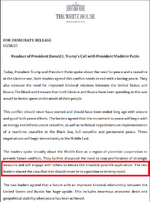Commentary: The @USNavy and @US5thFleet's decision to strike the bridge of the Galaxy Leader on March 16, 2025, around 8:00 PM Yemen local time (1:00 PM ET), stemmed from long-standing concerns that the vessel had been repurposed as a surveillance and targeting asset, leveraging its navigation and communication systems to monitor and potentially threaten maritime operations in the region.
Military action against the Galaxy Leader in 2024 was not feasible because, after its seizure by the Houthis in November 2023, the 25-member crew was held captive until their release on January 22, 2025. The Houthis effectively used the crew as human shields to deter any potential attacks on the vessel. This tactic aligns with documented instances where Houthi forces have employed civilians as human shields to protect their assets and positions.
The Houthis, having maintained control of the ship’s bridge, could have exploited its Automatic Identification System (AIS) to track vessels in the area, though AIS can be disabled to reduce visibility. Additionally, the ship’s marine radar remained capable of detecting nearby vessels, even without AIS, while its Electronic Chart Display and Information System (ECDIS) could provide real-time maritime traffic mapping, potentially identifying targets, including naval warships. The ship’s VHF and satellite communication (SATCOM) systems could have been leveraged for intelligence gathering, transmitting intercepted radio communications, issuing false distress signals.
Beyond reconnaissance, the Galaxy Leader could have served as a mobile surveillance post, and, in a worst-case scenario, if linked with external reconnaissance assets - such as drones or potentially even foreign satellites (e.g., Russian or Iranian ISR systems) - it might have been used to coordinate attacks on passing ships. However, there were key limitations - most civilian cargo ships lack military-grade sensors, making them far less effective for direct targeting.





